Food defines who we are and the places we come from. Historically, the development of cities has been shaped by food supplies, production methods, and distribution networks.
Cleveland was once the seventh largest city in the United States. The city’s rapid growth was tied to steel mills and oil refineries. Heavy industries provided employment for many, but at a high cost to the environment and the neighborhoods in the shadows of smokestacks, adjacent to the city’s notorious burning river.
While Cleveland’s heavy industries have been in decline since the 1970s, the city’s food economy is expanding. Legacy food businesses have been joined by new initiatives like the employee-owned Green City Growers Greenhouse, a state of the art facility that produces hydroponically-grown lettuces and specialty greens year-round; Cleveland Central Kitchen, a food hub and business incubator that helps local entrepreneurs and home-based business owners grow their ideas and products into commercially viable enterprises; and numerous home-based businesses and urban agriculture sites.
Neighborhood Food Futures documents Cleveland’s existing and emerging food sectors and proposes a framework for integrating a diverse range of food enterprises into a robust and resilient foodscape. We envision a future where food entrepreneurs are nurtured across the spectrum–from home-based businesses to start-ups to national/international food conglomerates. In addition to providing sustenance in a hungry city with a childhood poverty of 50%, Neighborhood Food Futures lays the groundwork for advanced food manufacturing operations, such as lab grown meat, 3D printed foods, and zero-waste food packaging.
Food manufacturing can thrive in urban neighborhoods through flexible production spaces. The spaces and places for food production can be designed as urban infrastructure, encompassing all stages of the food supply chain: growing food/urban farming, food processing/making; shared kitchens and production spaces, food retail; and food waste recycling/composting.
Neighborhood Food Futures will incubate innovative food businesses and agro-industries for a more prosperous and resilient city. Food operations integrate more easily into city neighborhoods, since they are cleaner than other forms of industry. Neighborhood residents are a nearby work force and an under-served consumer base, reconnecting food production to consumption and making food systems legible in city neighborhoods.
Synergies of Shared Use:
Shared facilities, equipment, and technology help existing companies save money and make it easier for start-ups & home-based entrepreneurs to become established.
Shared investments in roads, sewers, energy, and broadband benefit industries and residents.
Shared ownership - employee-owned cooperatives create pathways to prosperity.
Shared civic realm - integrating community uses into industrial areas allows for strategic coexistence.
Food District Actions:
Develop incubator spaces for food production, packaging, research and development.
Create identity through lighting, signage, streetscape elements that elevate food production activities and make them visible.
Design streets for pedestrians that also enable the flexible movement of goods.
Use residual spaces to create alternative ways to move through the neighborhood and allow for complementary uses at different times of the day & night
Develop spaces for interaction, public use, and programming.
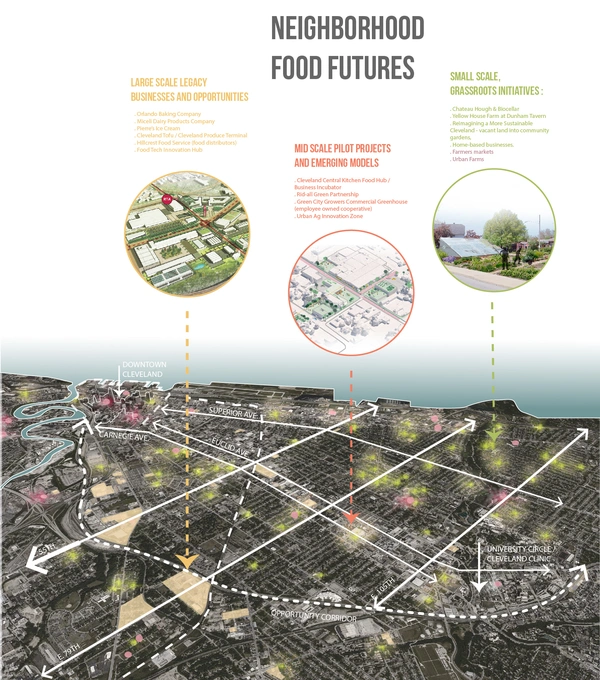
Map of Cleveland’s east side neighborhoods showing small scale, grassroots initiatives; mid-scale pilot projects and emerging models; and large scale legacy businesses and opportunities for transformative development.
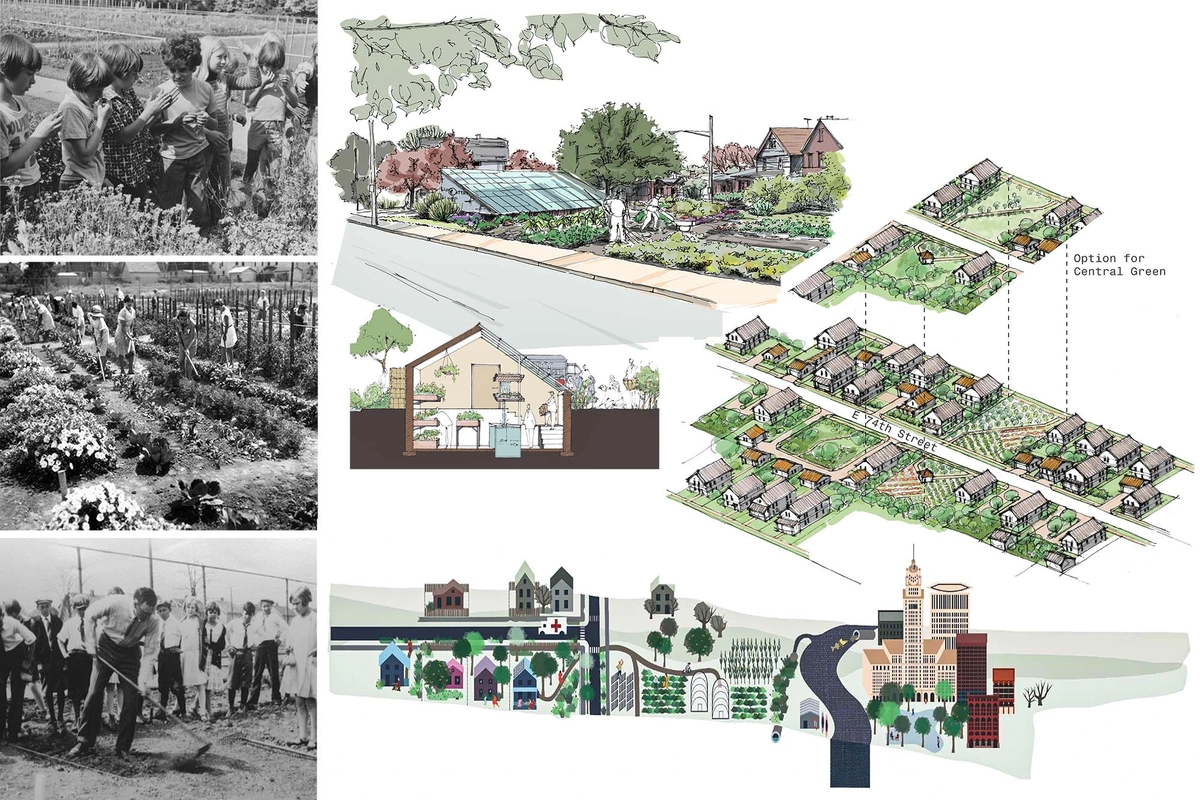
Small scale grassroots initiatives include an expanding network of community gardens and home based businesses, and grassroots initiatives like the Re-imagining a More Sustainable Cleveland initiative for vacant sites in the city’s land bank, Chateau Hough urban vineyard, and the Biocellar prototype for the reuse/reconfiguration of vacant and abandoned housing.
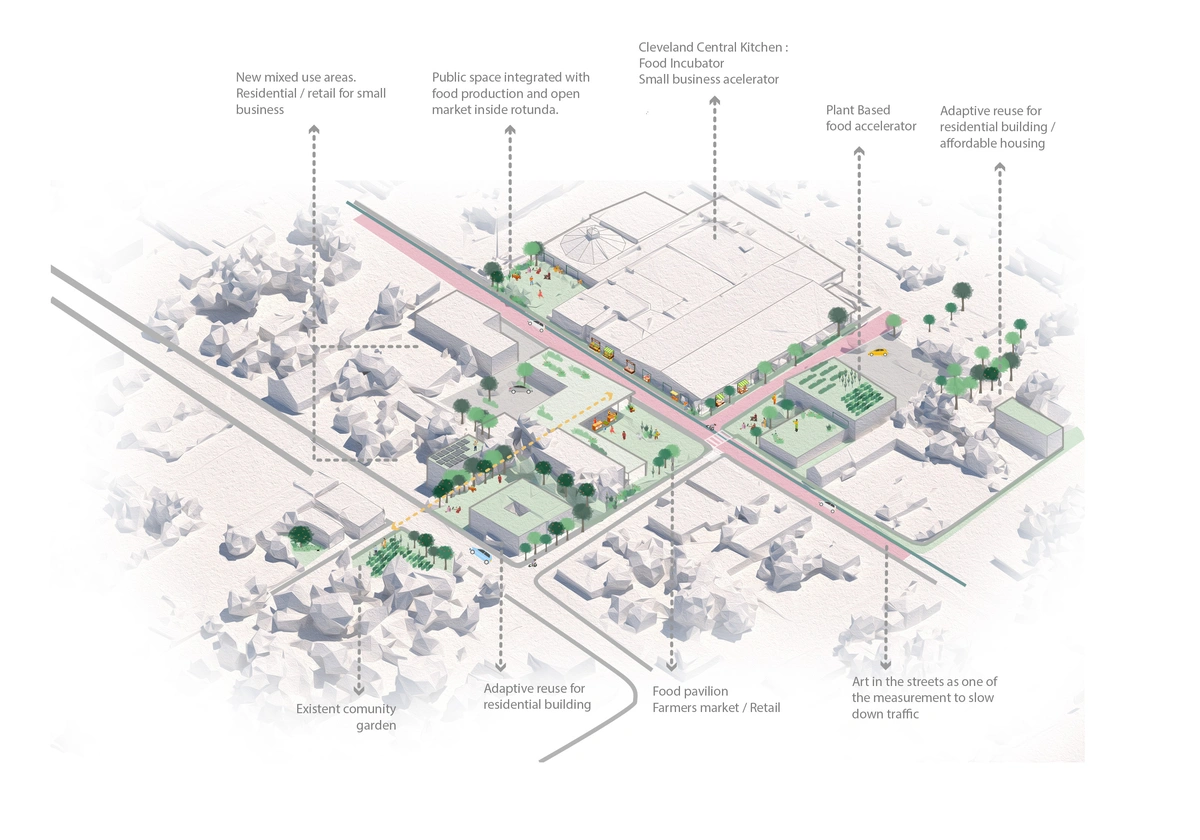
Mid scale pilot projects and emerging models include Cleveland Central Kitchen food hub/business incubator (pictured), Rid-all Green Partnership fish farm and commercial composting enterprise; Green City Growers commercial greenhouse/employee-owned cooperative; and the Urban Agriculture Innovation Zone.
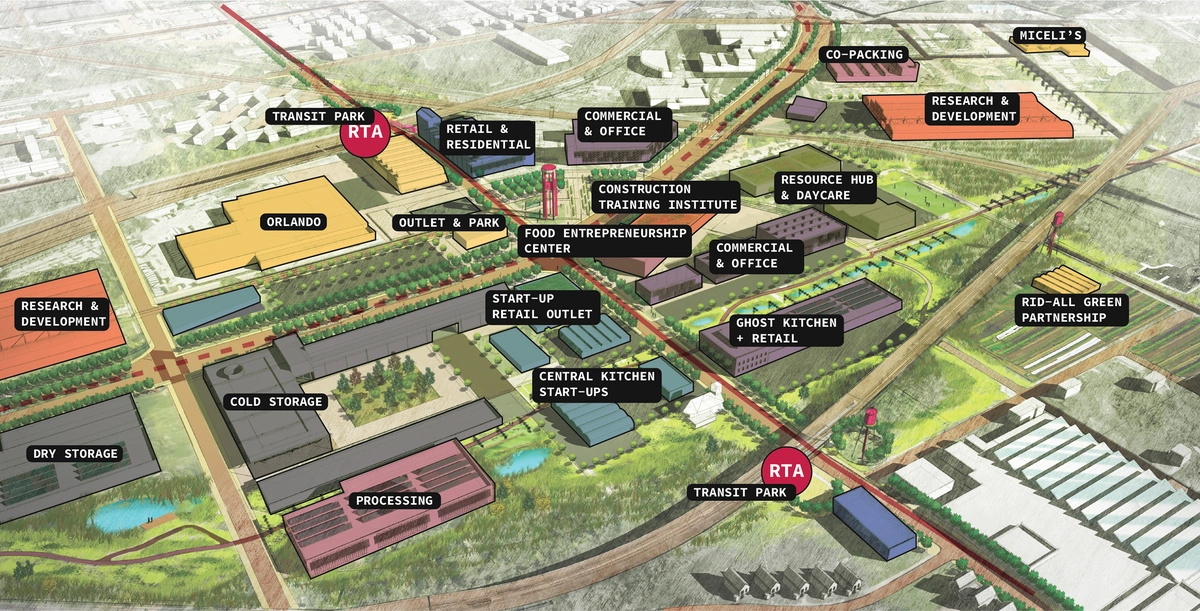
Large scale legacy businesses and opportunities include food businesses that have been established anchors in the city for decades, as well as a Food Tech Innovation Hub beginning to take shape on former industrial sites on the city’s east side.
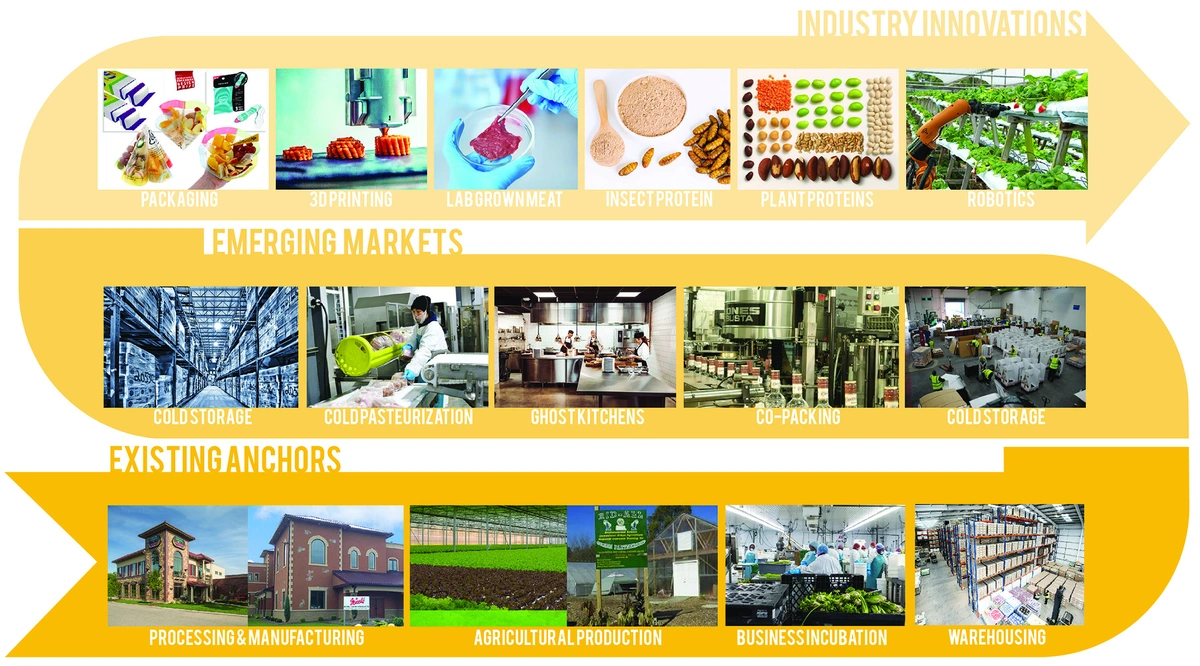
Cleveland Food System diagram shows the paths by which new investments in food businesses and infrastructure can benefit existing industries and open up opportunities for food innovation and community benefits.
Cleveland Urban Design Collaborative is the Outreach Division of the College of Architecture & Environmental Design at Kent State. CUDC combines a community design practice, applied research, graduate teaching, and advocacy to impact urban design decisions and land use policy in Cleveland, Great Lakes region of the US, and beyond. We have a professional staff of four designers and planners who work with community partners, graduate students, and faculty on a wide range of projects, including an International Design Exchange studio in which students simultaneously design for a site in Cleveland and an international site, providing new insights into local conditions while establishing a better understanding of the shared challenges facing global cities. Studios have traveled to Havana, Cuba; Beirut, Lebanon; Medellín, Colombia; and Curitiba, Brazil. The role of food production in the regeneration of older industrial cities has been a recurring theme in our work for the past decade.
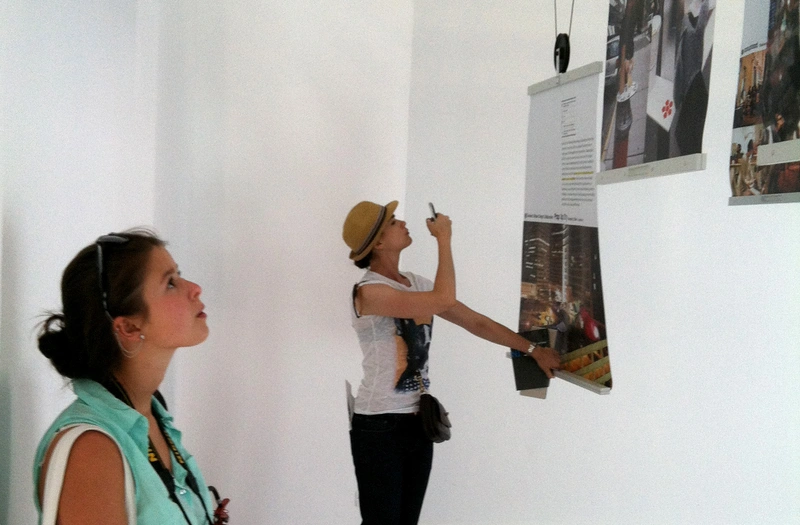
CUDC’s Pop Up City project was included in Spontaneous Interventions, the US exhibition at the 2012 Venice Biennale.
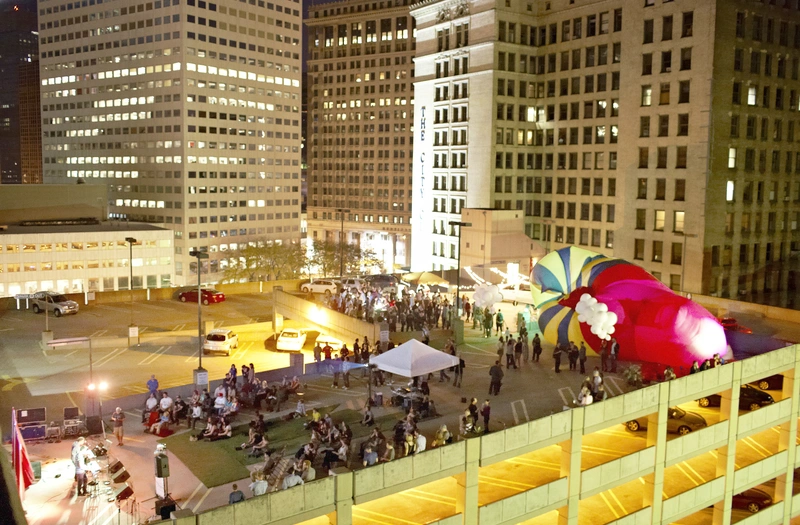
HIPP Deck - CUDC’s transformation of an underutilized parking deck in Downtown Cleveland as a public space and event venue.
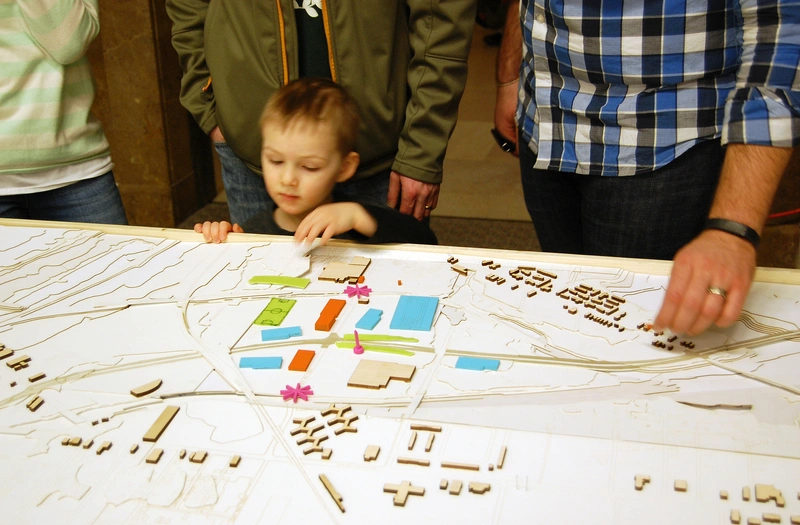
Interactive model for Opportunity Corridor, a complex and controversial new roadway through Cleveland’s east side neighborhoods. CUDC built this model to help residents evaluate alternatives and advocate for neighborhood priorities.
